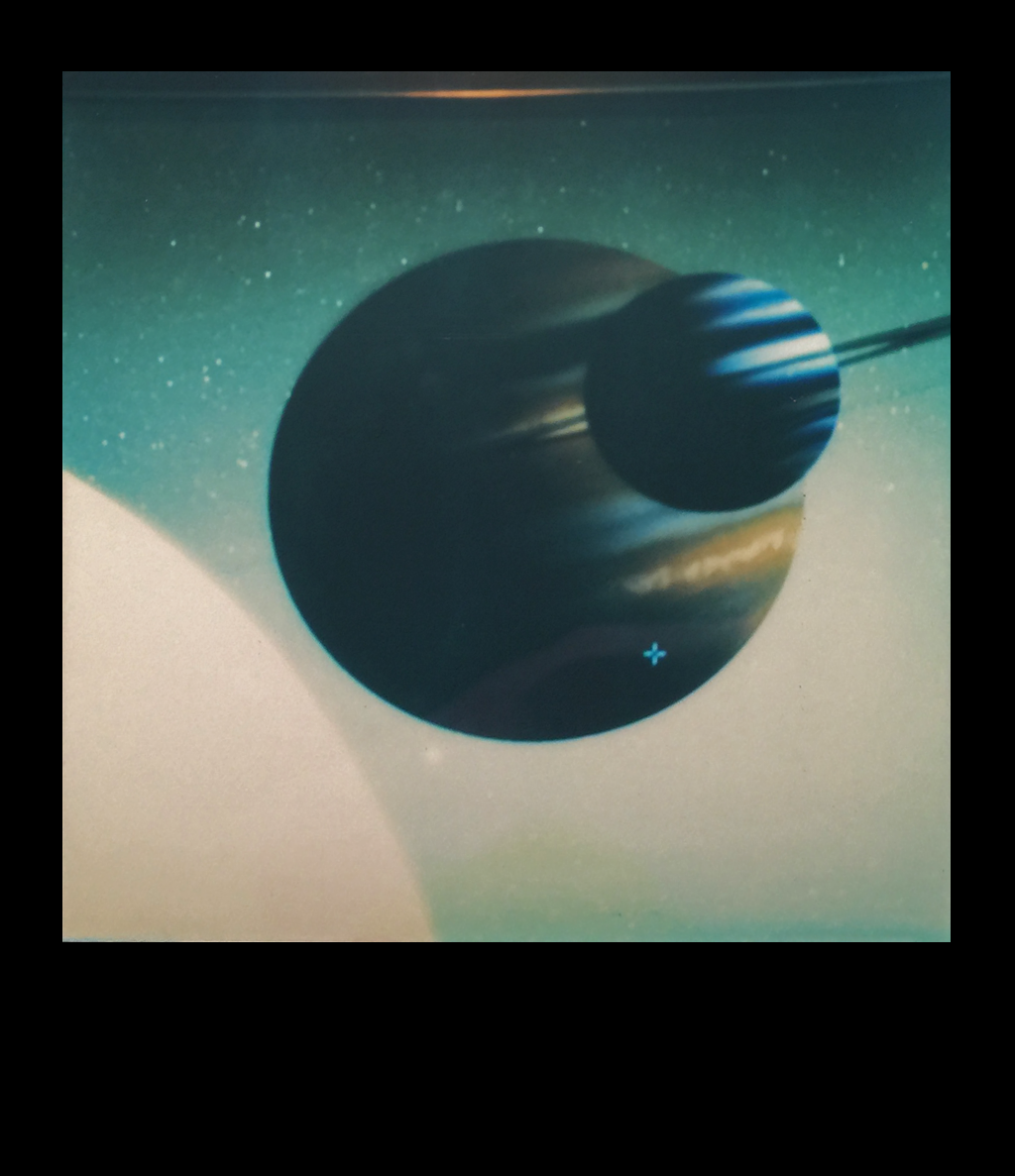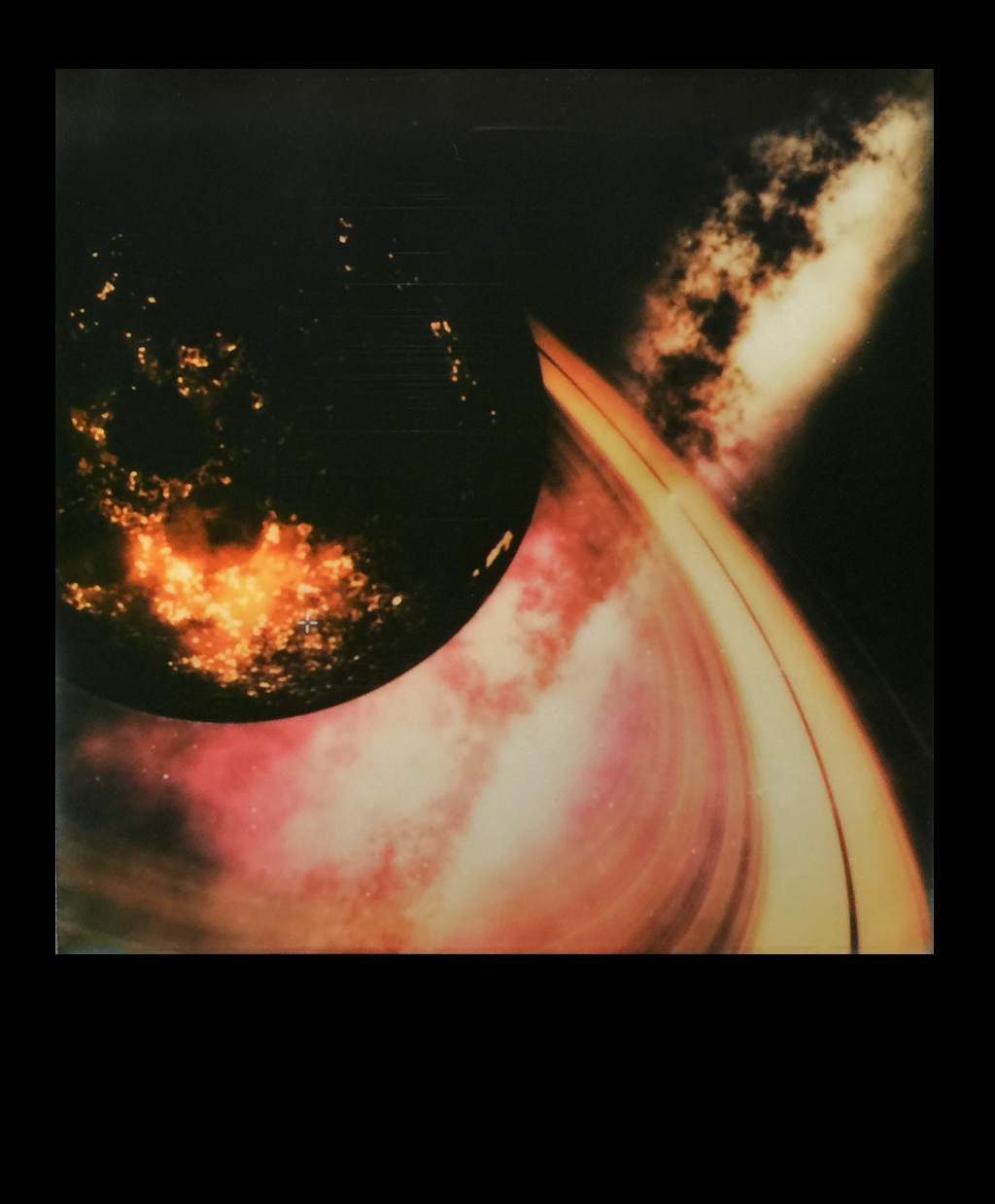I will dispense with my (by now, probably tiresome) apologies and excuses for not posting regularly, and will simply resume posting as time (and muse) permit. On this occasion, the subject is both old and new, on multiple levels. Specifically, old technology - as in Polaroid cameras and Polaroid-film-like one-step processing - and a new generation of photographers, exemplified by my 12 year old son, Josh, about whose discovery of - and burgeoning passion for - a bygone era of imaging I'd like to wax poetic about as both an admiring dad and "objective" observer.
Before we get to Josh, we need to first take a few steps back in time for context. A telling sentence that I have for years included in my
artist's statement reads:
"Photography became a life-long pursuit for me the instant my parents gave me a Polaroid Instamatic camera for my 10th birthday." This is indeed where my (now, 44th! year of) love of photography was born. While that old first camera of mine has long ago been relegated to an old dustbin, I have for years been trying to find another camera I was convinced still existed and to which I have an even deeper attachment. After I moved away from long Island in 1988 to start my post-graduate life in northern VA, I gifted my dad a
Polaroid Spectra camera so that he could continue archiving his art in my absence (a blessing that, years later, resulted in the
book my mom and I wrote on his life, art and legacy, in the years following my dad's death in 2002). Ever since he died, I have regularly searched my mom's home for his camera, but to no avail; until, that is, my mom excitedly called me up one day to announce that she had finally found it. Miraculously, it had been tucked away in a quiet corner of the top-most shelf in her bedroom closet!
The timing, as it turns out, could not have been better, for two reasons; one technology related, the other very personal. From a technology standpoint, were it sometime in 2008, I would have been crestfallen, since Polaroid - after a sad, tragic even, downfall, in the years after its visionary genius founder and chief scientist,
Edwin H. Land, left just before the landmark
Polaroid vs. Kodak patent infringement judgment - stopped making new film. Happily, an extraordinary new effort - called the
Impossible Project (named after Land's famous aphorism,
"Don't undertake a project unless it's manifestly important and nearly impossible") - was founded (by
Florian Kaps and
Andre Bosman) to recreate polaroid instant film; albeit using a different recipe, due partly to the fact that details of the Polaroid's recipe had been destroyed, and partly to the fact that even had all of the details been retained, many of the required chemicals were either no longer available or, in some cases, illegal to manufacture. Though the young company's challenge was formidable, just two years after the project got going, it started producing reformulated versions of classic Polaroid instant film formats, including SX-70, 600, and Image-Spectra, as well as 8x10. As of this writing, the Impossible Project has announced
Generation 2 of its 600-type B&W film, which promises to be even closer to the classic Polaroid film than its first generation recipes: image formation within 20 seconds, and a fully developed photo within 5 minutes!

And so we get to my 12 yo son Josh, who, after waiting patiently for the 30 or so minutes that needed to elapse before a ghost-like image formed after his dad took his first test shot with the rediscovered vintage Spectra (using a Gen-1 B&W film pack from the Impossible Project), stood utterly transfixed with his mouth open and proverbial jaw slackened. "Wow!" he genuinely and loudly gasped, "The image is forming by itself! That is SO COOL dad!" To emphasize how slack jawed I was at Josh's sincere, from-the-heart, reaction, I need to point out that none of the other tens of thousand images I have taken during his young life with my digital SLR (the creation of many of which he witnessed first hand, whether at the instant of capture - and instant display! - post-production in Photoshop, or via the final print) elicited so much as a peep! Indeed, I had surreptitiously probed Josh's possible interest in photography a few years ago by gifting him his own digital point-and-shoot, which he enjoyed for a time but was decidedly less than enthusiastic about. But his reaction to the polaroid was different; very different.
In the roughly two months that have gone by between Josh's unabashed awe at witnessing what he later described as a small miracle ("I can hold the image in my hand!"), Josh, at his own request and partial payment using his own savings, has acquired a Polaroid Spectra, an SX-70 - the
extraordinary SX-70 that many, myself included, consider among the finest art/science/technology blends of the 20th century), a shoulder bag and tripod (well, those were gifts from dad), and enough film to last a few months (though he is burning his way through his store like a photographer possessed). Speaking as a father, it is a joy to see such pure, unbridled passion. Speaking as a photographer (albeit, admittedly not quite an unbiased one), I take an even greater joy in witnessing an unmistakable talent anxiously bubbling up to the surface. The sample images you see sprinkled throughout this page are some early -
very early (all were taken using his first 4 or 5 five film packs) - samples from Josh's eye and camera. I am impressed by both his choice of subject matter and composition.
For example, where most people (young and old, doesn't matter) inaugurate a newfound interest in photography with obligatory snapshots of friends, family, pets, and their impressions of the front lawn, Josh almost immediately turned his attention to slightly more esoteric subjects. Case in point, the picture at the top of the page (a "self-portrait of an SX-70"). Recalling a photography-related discussion he and I had about lengths of exposure, sharpness of image, and what
is and is
not necessarily captured on film, Josh - by himself - decided to set up his SX-70 on a tripod, so that it faced itself in a mirror in a slightly darkened room without flash. He did this so that he could take a long enough exposure so that the fraction of a second during which his hand needed to be in view of the lens (in order to click the shutter button) was too short for the film to record. The result was the beautifully crafted picture reproduced here. It is a deliberately "seen" image, somewhat reminiscent of Ansel Adams' self-professed visualization of "
Monolith, the Face of Half Dome" (which is a remarkable accomplishment for someone so young). But I was equally astonished at the aesthetic elegance of Josh's composition. The image is essentially an ode to rectangles and other linear forms; with a beautifully placed Polaroid
One-Step camera (my wife's, who is also getting into Polaroid photography in our family as a direct result of Josh's infectious enthusiasm) in the lower left corner, as a quiet echo of the "star attraction" of the overall image. This is just beautifully seen, especially by one who has taken so few pictures in his life. While Josh swears that his sole focus (no pun intended) was in capturing a self-portrait of the SX-70, and not composing a picture, I sense that an unconscious - but confident - will-to-order is in play and am impressed.

I am also impressed with Josh's first "abstract series," two samples of which are seen here. Josh has recently been enjoying the remarkable
Space Engine program that is available for free for PCs (
Space Engine allows the user to essentially navigate the entire cosmos; I have neither the time nor space ;-) to do justice to this truly visionary work. I encourage all readers with an interest in space to download this amazing simulation and explore its vast potential on their own). Thus, "naturally" (though, perhaps this does not come so naturally to everyone), Josh almost immediately pointed his SX-70 at some
Space Engine screens he found during his explorations of the cosmos - and deliberately composed the appearance of specific shots to his liking. His captures show an ineffably beguiling beauty; not to mention a Zen-like compositional elegance. Once again, this is astounding for one who barely two months ago hardly ever touched a camera.
Finally, Josh's sheer exuberance with his new found passion for Polaroid photography is captured by my wife (with her iPhone) as he is unexpectedly gifted his third Polaroid on a visit to his grandmother in Florida. This kind of joy comes straight from the heart, cannot be faked, and just radiates sincerity.
Of course, I have no idea how long Josh's enthusiasm will last. It may die out, it may intensify, or it may transform into some other related art form. But if these early indications are a valid data source, he has clearly been very deeply bitten by his creative muse. May they forever more remain inseparable :-)
References: readers interested in exploring Polaroid's history (and, in particular, the biography of the great Edwin H. Land), can look at any of these sources: (1)
history of the SX-70, (2)
a 1970s commercial for the SX-70, (3) (short)
biography of Edwin Land (at the
Rowland Institute, which he founded after leaving Polaroid), (4) (video) Edwin Land's
retinex theory of color vision, and (5)
Time Zero is a wonderful documentary on the rise and fall of Polaroid, and the recent emergence of the Impossible Project; as of last month this documentary was available for subscribers to Netflix. Some of the better books include: (1)
Insisting On the Impossible : The Life of Edwin Land, (2)
Instant: The Story of Polaroid, (3)
Land's Polaroid: A Company and the Man Who Invented It, and (4)
A Triumph of Genius: Edwin Land, Polaroid, and the Kodak Patent War. For those of you who would like to dive a bit deeper into Land's work as scientist: (1) parts
one and
two of Land's 1959 papers on color vision for the
Proceedings of the National Academy of Sciences, (2) a 1971
paper on his retinex theory of color vision, co-authored with John Mccann in the
Journal of the Optical Society of America, and (3) a semi-technical
paper (in Adobe pdf format) he wrote for
Scientific American in 1977. Finally, a wonderful 16-min long film,
The Long Walk, made in 1970, that shows Land giving a tour of Polaroid's offices and factories in Massachusetts.
Postscript: it is not a coincidence that Apple has often been called the latter-day Polaroid. At the top of Steve Jobs' (very)
short list of visionary heroes is Edwin H Land. As Christopher Bonanos points out in his book,
Instant: The Story of Polaroid, and confirms with
published photos, the Ikea-like small but stylish tables that Land and Jobs both used on their respective stages (Land, while introducing the SX-70 to share-holders, and Jobs while demoing the iPad) were essentially the same model. Hardly a coincidence ;-) An hour-long talk that Mr. Bonanos gave at Google in 2012 is available
here.










































